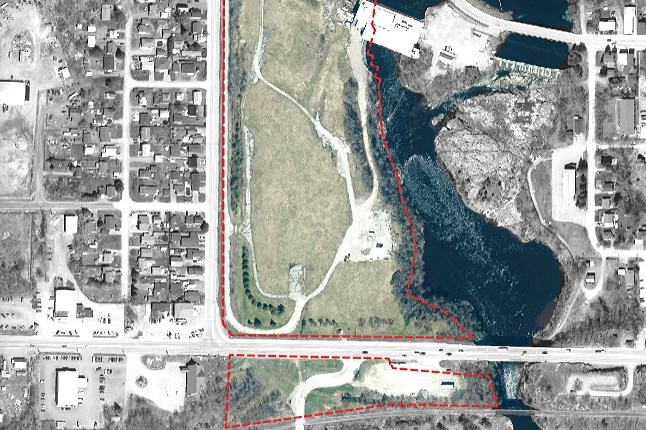Sturgeon Falls Mayor Kathleen Rochon expects an environmental assessment will get underway this fall and winter to prepare the site of a former paper mill for redevelopment.
The community of West Nipissing, which includes Sturgeon Falls, located west of North Bay, received $50,000 in FedNor money on Aug. 28 to pay for the study. It's the second to be done on the property, which formerly hosted a corrugated paper plant operated by Weyerhaeuser.
“There will be core sampling done to test soils and look for any kind of concerns that we may need to address before we move forward with the next steps in getting the lands developed,” the mayor said.
“We will move the project forward after that,” she added, “but we need to know exactly what we’re dealing with” on the former industrial site. “We need to make it safe prior to development.”
The municipality purchased the 27-acre parcel of land in 2020, 18 years after the mill closed. Two years after taking the deed, municipal staff and council began working on a land use development strategy to create a vision for the acreage. The goal is to use the land — situated near Sturgeon Falls’ downtown core — for commercial, retail, residential, and parkland uses.
“It’s a step-by-step process,” Rochon said, and the federal money for an environmental study helps to push the process along.
Once complete, the municipality will begin severing the property and rezoning. “There are lands we want to set aside as public access, and we’ll start looking at some of the zoning within the larger piece of property.”
Part of the land is along Highway 17 (Front Street). The plan for that is to make it available to commercial enterprises. The municipality also wants to include sections for housing and an urban commercial area for smaller-scale businesses. Along the water, the vision is for a riverfront park.
Some land will also be kept aside for West Nipissing Power Generation “in case there is a need for future expansion,” the mayor said. “We need to protect the long-term sustainability of the hydrogeneration station as well.”
Much of the development will depend on private equity — the commercial areas, the stores, the homes — but the municipality will continue to work on the planning of the land, and the development of the parkland.
“That land really has the power to shape what our community looks like in the years to come, and we really want to do it in a strategic way,” Rochon said.
As for selling the entire plot to a private developer? The mayor doesn’t see that happening.
“Once you sell to a private investor or developer, what they do with it is based on profit, on what’s best for them, and not necessarily based on what’s best for the community.
“I think the community is better served if we as a council try to maximize the use and the value for our residents,” Rochon added
David Briggs is a Local Journalism Initiative reporter who works out of BayToday, a publication of Village Media. The Local Journalism Initiative is funded by the Government of Canada.




